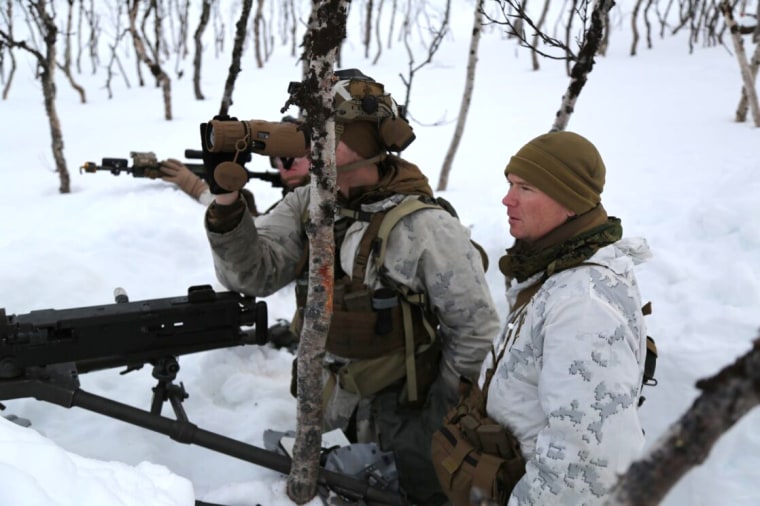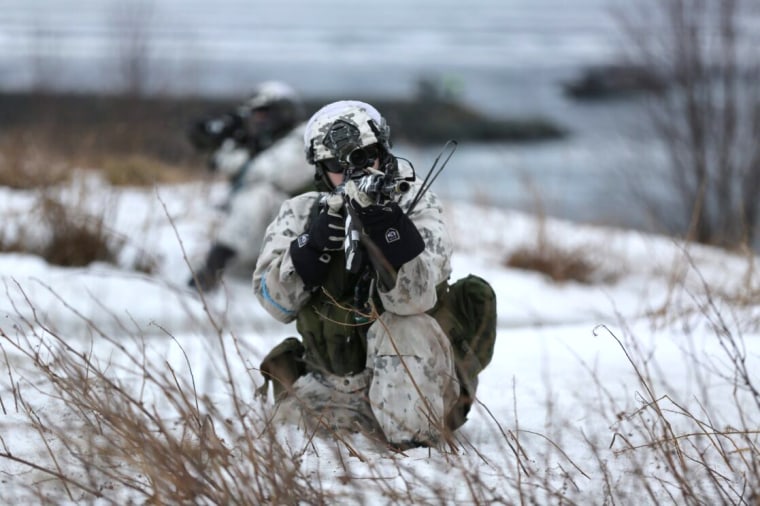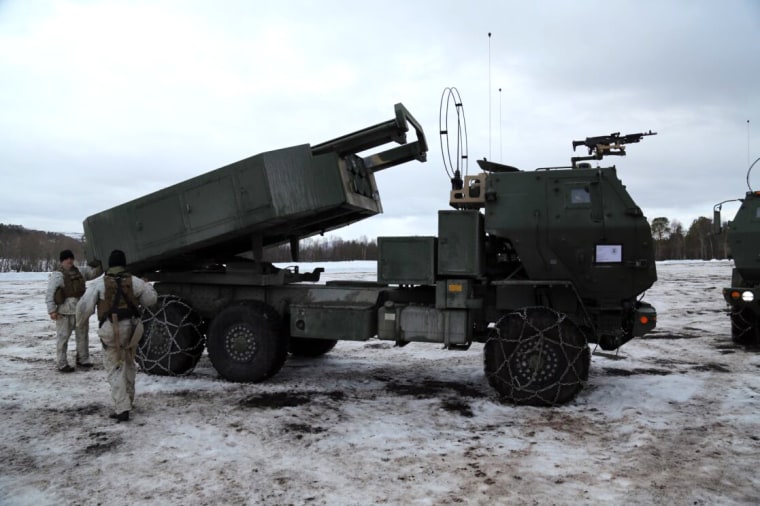U.S. Marines join huge NATO training exercises in Norway
ALTA, Norway — Nestled waist-high in Arctic snow miles away from civilization, U.S. Marines looked through binoculars from their machine-gun position toward the frozen ridge, watching for signs of enemy movement.
Their battalion commander in this exercise, Lt. Col. Thomas Driscoll, approached the trench they dug by hand into the mountainside and asked what they needed.
“More ammo,” one of them replied.
In a nearby tent, fellow soldiers dried snow-saturated cammies over a gas stove. For nearly two weeks, they lived, slept and trained on this stretch of tundra on the northern tip of Norway where temperatures regularly dip below zero.
But when the orders came to change position, they packed the tents and hurriedly filled in the ditches. Within around two hours, they’d taken off on snowmobiles and tracked vehicles, leaving barely a trace behind.

The fact that troops from the II Marine Expeditionary Force traveled thousands of miles from their base in North Carolina for two weeks of exercises, is a sign of the Arctic’s emergence as a new battlefield in a growing competition between East and West. As climate change exposes once-unreachable parts of the planet, the U.S., Russia and China are all in a race for military and economic dominance.
“The Arctic is absolutely critical,” the assistant commandant of the Marine Corps, Gen. Christopher Mahoney, said in an interview in Norway before the exercises wrapped up this week. “The opening of the Arctic as far as maritime waterways, in lines of communication, make it that much more important.”
The Marines were among some 20,000 troops from 13 nations taking part in NATO’s “Nordic Response” exercise, part of larger war games that are the biggest since the Cold War. The exercise extended to Sweden and Finland, NATO’s two newest members, whose addition in the last year added more than 800 miles to the alliance’s border with Russia.
The scenario: A major adversary is launching a cross-border invasion from the east, and NATO has been activated to repel them. For the Marines, the U.S. military’s rapid response force, the task was to delay the enemy’s advance until reinforcements arrived.

It’s a scenario that seems ripped straight from Russia’s war in Ukraine and the resulting fears that Moscow might seek to threaten NATO nations next. U.S. and Norwegian military officials said they have been studying Russia’s successes and failures on the snowy battleground of Ukraine to learn lessons about defending NATO’s northern flank. The officials requested anonymity because they were discussing sensitive intelligence matters.
For the U.S. military, it’s a major shift after decades fighting wars in Iraq and Afghanistan and conducting counterinsurgency against extremist groups in the Middle East. Lt. Col. Driscoll, of the 2nd Marine Regiment, said a large part of his 18 years of service had been spent in Iraq and Yemen.
“The adversary is very different,” he said. “Now we’re in this tactical scenario facing a large-scale, modernized adversary who brings a lot of capability: long-range, indirect fire, large amounts of reconnaissance. And then you’ve got the actual environment: not the heat of the desert, but the harsh cold.”
Corp. Tyler Staehr, 22, brought his expertise operating a HIMARS artillery system — the same kind the U.S. has provided to Ukraine — to an icy stretch of Norway about 150 miles from the Russian border. As the truck-mounted rocket launcher hummed behind him, he recalled learning how to boil snow every morning and night for drinking water.
“Here everything’s a little bit more scarce,” said Staehr, from Lancaster, South Carolina. “So you have to rely on yourself and on your team if you want to survive out in the Arctic climate.”

As the U.S. and NATO allies hone their cold-weather skills, Moscow is watching. The Norwegian officials said that they had detected Russian vessels in the area spying on the war games and working to pinpoint their radar positions.
While Russian spying on NATO and vice versa is nothing new, Norwegian officials said they’ve detected changes in Russian behavior in recent years, including an increase in electronic warfare like signal-jamming. They also said that Norwegian troops operating near the border have increasingly been approached by Russians in what they suspect is intelligence-gathering.
Read More: U.S. Marines join huge NATO training exercises in Norway

